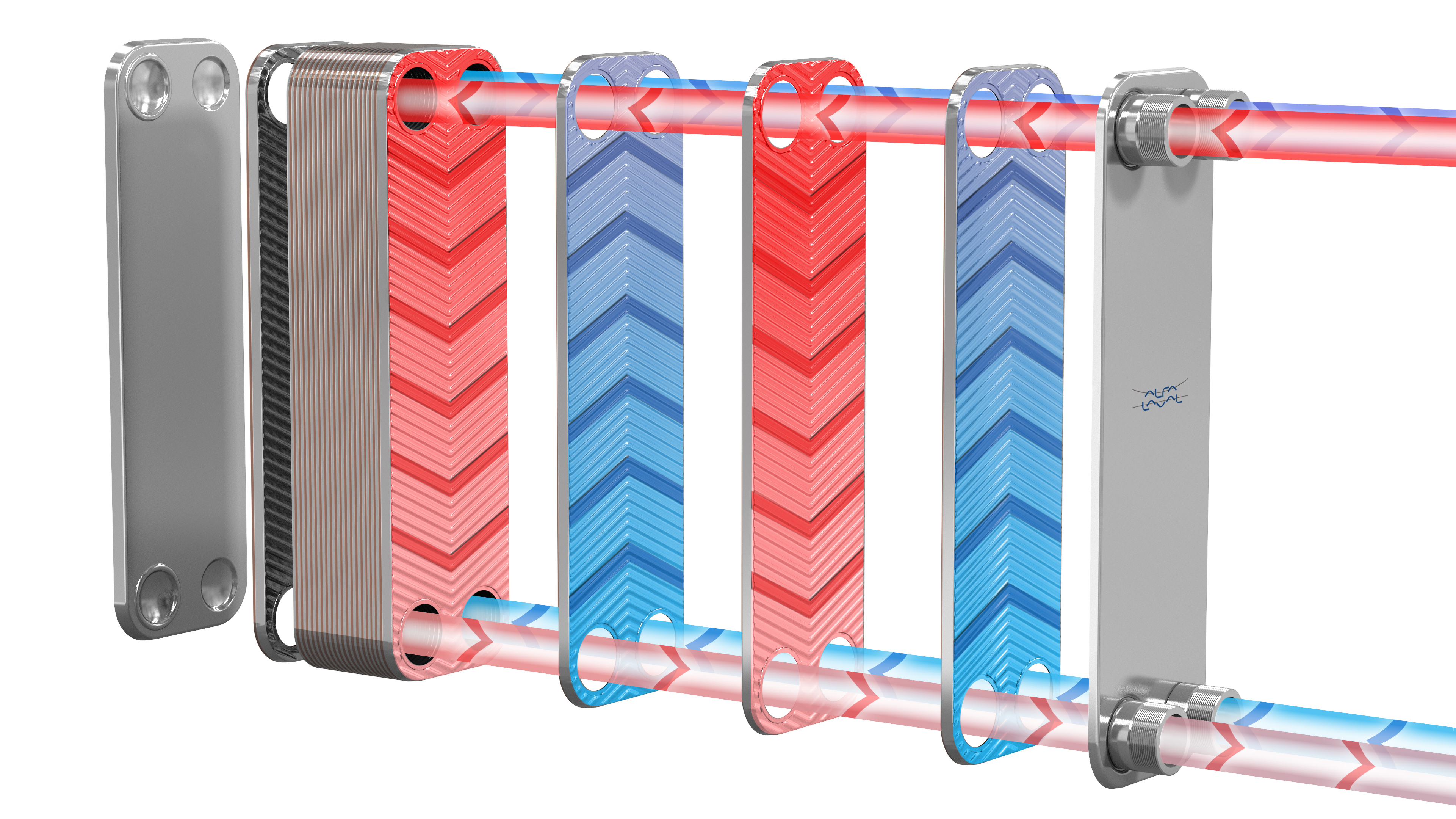CBAQ
The Alfa Laval CBAQ brazed plate heat exchangers are aimed at HVAC applications. The range is AHRI Certified® through the Liquid to Liquid Brazed & Fusion-bonded Plate Heat Exchangers (LLBF) Certification Program to ensure the thermal performance. The performance certification verifies that the product performs in accordance with the manufacturer's published rating. The heat exchangers are used in applications such as district energy systems, potable water heating and free cooling systems.
The Air Conditioning, Heating and Refrigeration Institute (AHRI) Standard 400 certification is an independent, third-party verification of thermal performance. Through its certification program and standards, AHRI strives to help customers save energy, improve their productivity and help to ensure a better environment.
AHRI Certified™ is the trusted mark of performance assurance for heating, ventilation, air conditioning and commercial refrigeration equipment. Products earning the mark undergo rigorous, independent annual evaluation to ensure that they perform according to the manufacturers’ published claims. Certifying HVACR equipment and component performance allows consumers to compare products based on independently verified performance ratings. To find AHRI Certified™ products, go to the AHRI directory.
AHRI Certification Procedures and Benefits
To certify a product to AHRI standards, the manufacturer submits specifications and performance data to AHRI for performance evaluation and potential certification.
Once certified, buyers and users can be assured that:
- The plate heat exchanger will perform in accordance with the manufacturer’s published ratings.
- Product performance can be easily compared for their specific application.
The CBAQ range of brazed plate heat exchangers has numerous advantages over traditional heat exchangers HVAC installations. The exceptional heat transfer efficiency makes all CBAQ units very compact. As a result, they can tackle large-capacity duties even though there is only limited installation space available.
The brazed construction also does away with gaskets, making CBAQ units ideal in applications where temperatures and/or pressures are high. Examples include district heating and a wide range of heating, cooling and tap water solutions.
Units in the CBAQ range are available in many different sizes and capacities.
Cost effective for everyone involved
End-users
- Reduces lifetime operating costs significantly by assuring a more energy-efficient system
- Ensures full investment value by reducing costs for field tests and additional component performance margins
Consultants
- Allows for the design of a system in which all the major components are independently performance certified
- Ensures that targets on power consumption and climate control can be met
- Provides a verifiable basis for heat exchanger selection
- Protects the owner and consulting engineer from performance concerns during commissioning and after installation
Contractors
- Ensures that all certified plate heat exchangers included in proposals will deliver the stated thermal performance
- Reduces troubleshooting time during commissioning and after start-up

美国空调、供暖及制冷学会(AHRI)产品性能认证计划是一项自愿性计划,由 AHRI 负责管理和支配,以确保各类供暖、通风、空调、制冷和热水产品的性能符合制造商公布的要求。
通过 AHRI 产品性能认证计划认证的产品,在 AHRI 的指导下,由 AHRI 签约的独立第三方实验室进行连续测试,以确定产品是否符合一个或多个产品等级标准或规格。
运行原理
Heat transfer technology involves bringing two substances at different temperatures close to each other so that one either heats or cools the other.
Design
A brazed plate heat exchanger consists of thin, corrugated stainless steel plates, stacked into a plate package and brazed together with pure copper.
The brazing material seals and holds the plates together at the contact points ensuring optimal heat transfer efficiency and pressure resistance. The plate design guarantees the longest possible life. Brazing the stainless steel plates together eliminates the need for gaskets and thick frame plates.
Pressure peaks and rapid temperature cause substantial physical stresses within the materials, and Alfa Laval’s research has focused on the details of these phenomena in order to ensure designs that are extremely resilient and provide a long service life.
Working principle
Channels for the fluids are formed between the plates. The two fluids flow in alternate channels in a counter-current flow pattern in order to achieve the most efficient heat transfer. The transfer of heat energy from one fluid to the other takes place over the large surface. The corrugation of the plates is specially designed to induce maximum turbulence and even distribution of both the fluid flows in order to make heat transfer as efficient as possible.
Material
The plates and connections are made of stainless steel. The brazing material is made of pure copper.
Cleaning
The turbulent flow in the heat exchanger has a self-cleaning effect. Should cleaning still be necessary, learn more on about CIP (Cleaning-in-place).


